 |
 |
 |
| |
EFFICACY AND SAFETY AT 96 WEEKS OF BULEVIRTIDE 2 MG OR 10 MG MONOTHERAPY FOR CHRONIC HEPATITIS DELTA: RESULTS FROM AN INTERIM ANALYSIS OF A PHASE 3 RANDOMIZED STUDY
|
| |
| |

DDW 2024 May 18-21 Wash DC
Renee-Claude Mercier
Author(s): Heiner Wedemeyer, Soo Aleman, maurizia R. Brunetto, Antje Blank, Pietro Andreone, Pavel Bogomolov, Vladimir Chulanov, Nina Mamonova, Natalia Geyvandova, Viacheslav Morozov, Olga Sagalova, Tatyana V. Stepanova, Dmitry Manuilov, Renee-Claude Mercier, Qi An, John F. Flaherty, Anu Osinusi, Audrey H. Lau, Julian Schulze zur Wiesch, Markus Cornberg, Stefan Zeuzem, Pietro Lampertico
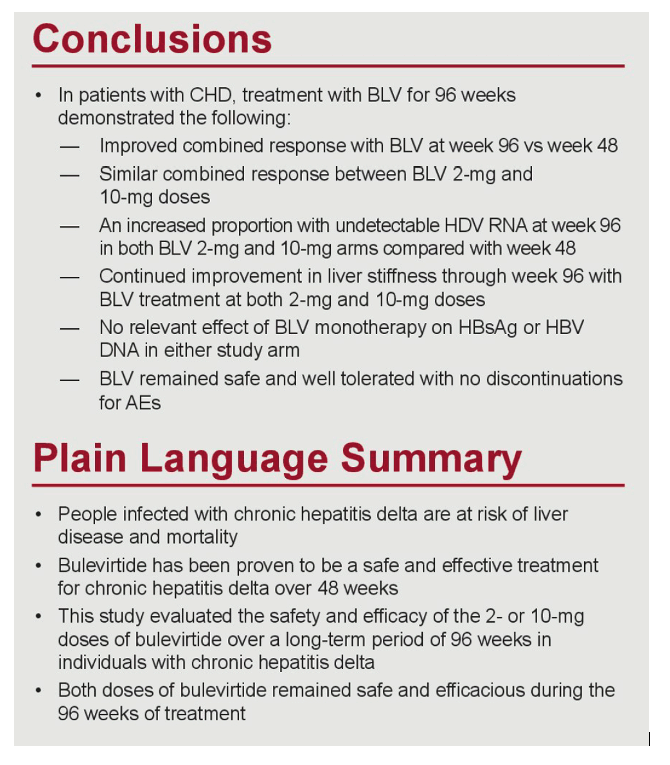
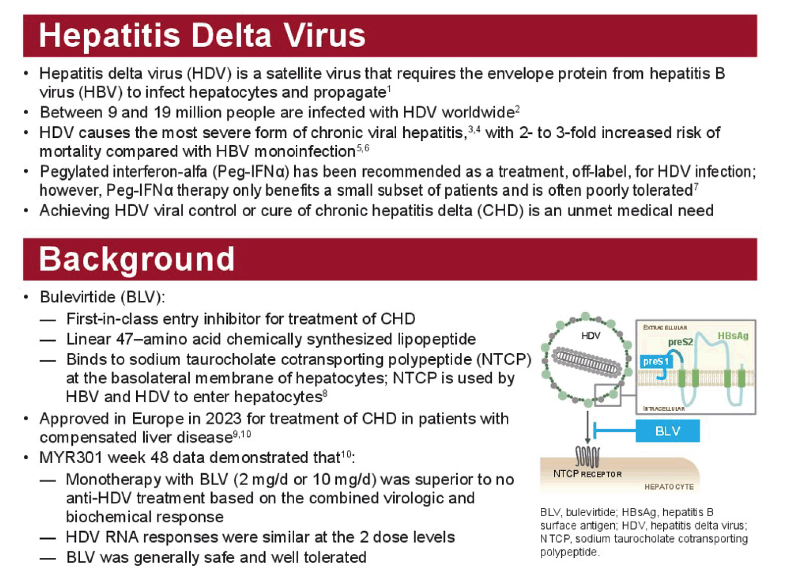
ABSTRACT
Bulevirtide (BLV), a first-in-class entry inhibitor of hepatitis delta virus (HDV), is approved in the EU for the treatment of chronic hepatitis delta (CHD) at a dose of 2 mg/d. Results from the Week 48 primary endpoint analysis for MYR301 (NCT03852719), a Phase 3 randomized study, showed monotherapy with BLV at 2 or 10 mg/d given subcutaneously was superior to no active anti-HDV treatment based on combined viral and biochemical response. Efficacy was similar at the 2 doses, and BLV was generally safe and well tolerated.
Here, we present findings from the predefined Week 96 interim analysis of this ongoing study. Patients with CHD (n = 150) were randomized (1:1:1) and stratified based on compensated cirrhosis status: Arm A, no active anti-HDV treatment for 48 weeks followed by BLV 10 mg/d for 96 weeks (n = 51); Arms B or C, treatment with BLV at 2 (n = 49) or 10 mg/d (n = 50), respectively, each for 144 weeks, with follow-up of 96 weeks after the end of treatment (up to Week 240).
Combined response was defined as undetectable HDV RNA or decreased by 2 log10 IU/mL from baseline and alanine aminotransferase (ALT) normalization. Other endpoints included viral response (undetectable HDV RNA or decreased by 2 log10 IU/mL from baseline), ALT normalization, change in HDV RNA, and change in liver stiffness (LS) by transient elastography. Baseline characteristics were similar between groups and included: mean (SD) age 41.8 (8.4) years, 57% males, 83% White, 47% with compensated cirrhosis, mean (SD) HDV RNA 5.05 (1.34) log10 IU/mL, mean (SD) ALT 110.9 (69.0) U/L, mean (SD) LS of 15 (8.9) kPa, and 61% on concomitant nucleos(t)ide analogue therapy.
Of 150 patients, 143 (95%) completed 96 weeks of treatment. Efficacy responses improved between Weeks 48 and 96 (Table). At Week 96, similar combined responses were seen in Arms B and C. Viral and biochemical responses were also similar among Arms B and C. BLV was safe and well tolerated; there were no drug discontinuations, serious adverse events, or deaths attributed to BLV. Increases in bile acids without a correlation to pruritus or other symptoms were noted with BLV treatment. Injection-site reactions occurred more often at the 10 mg/d dose. Overall, BLV continues to be safe and well tolerated as monotherapy for CHD through Week 96. Virologic and biochemical responses increased with longer-term therapy.

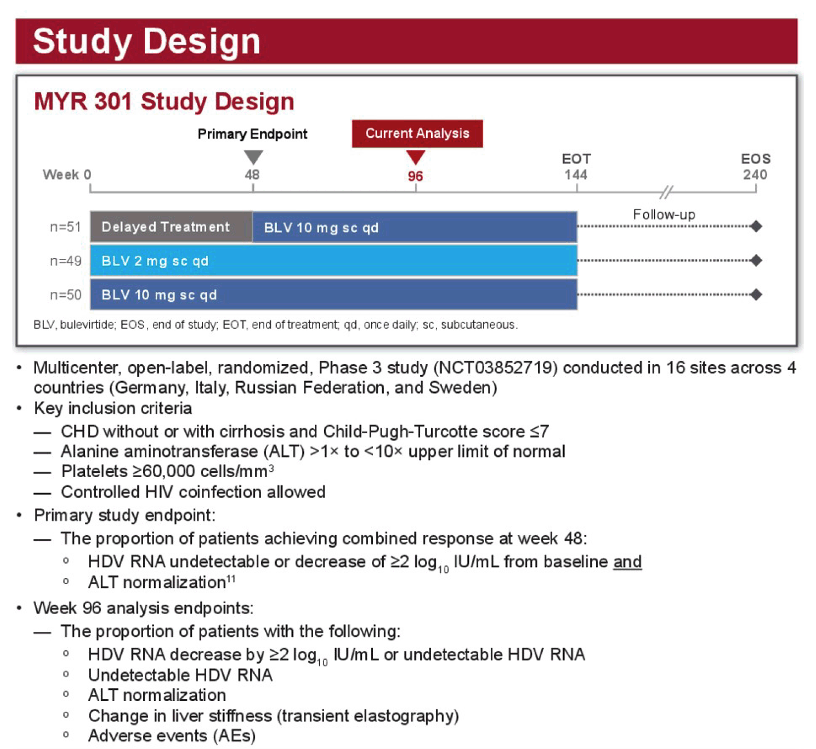
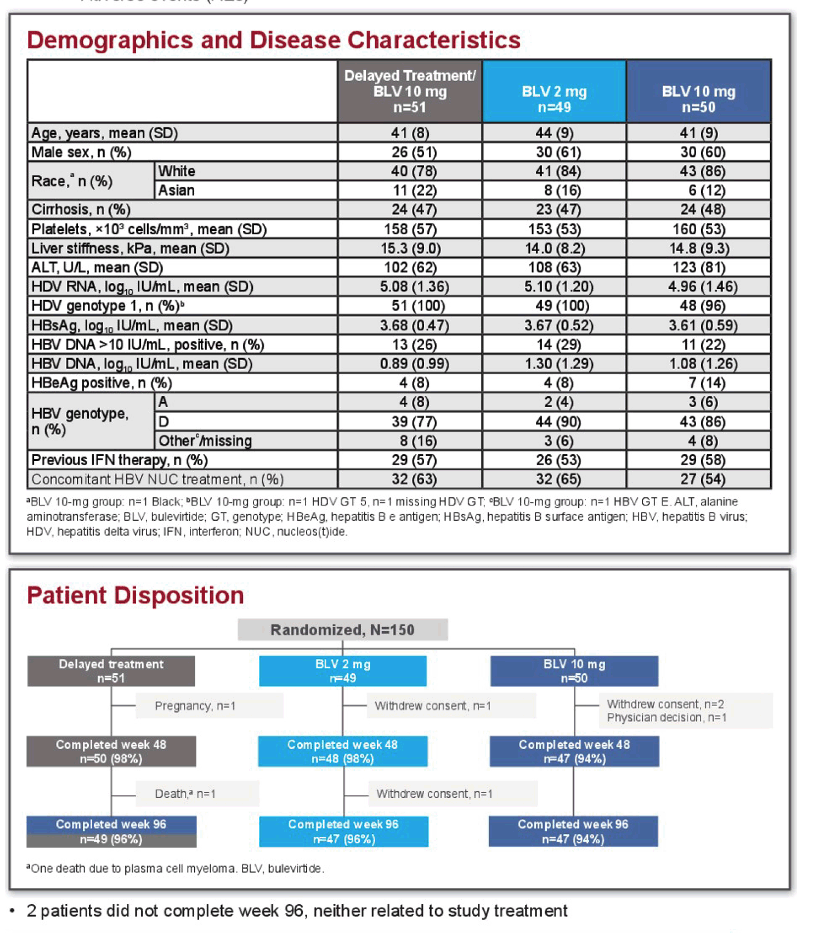
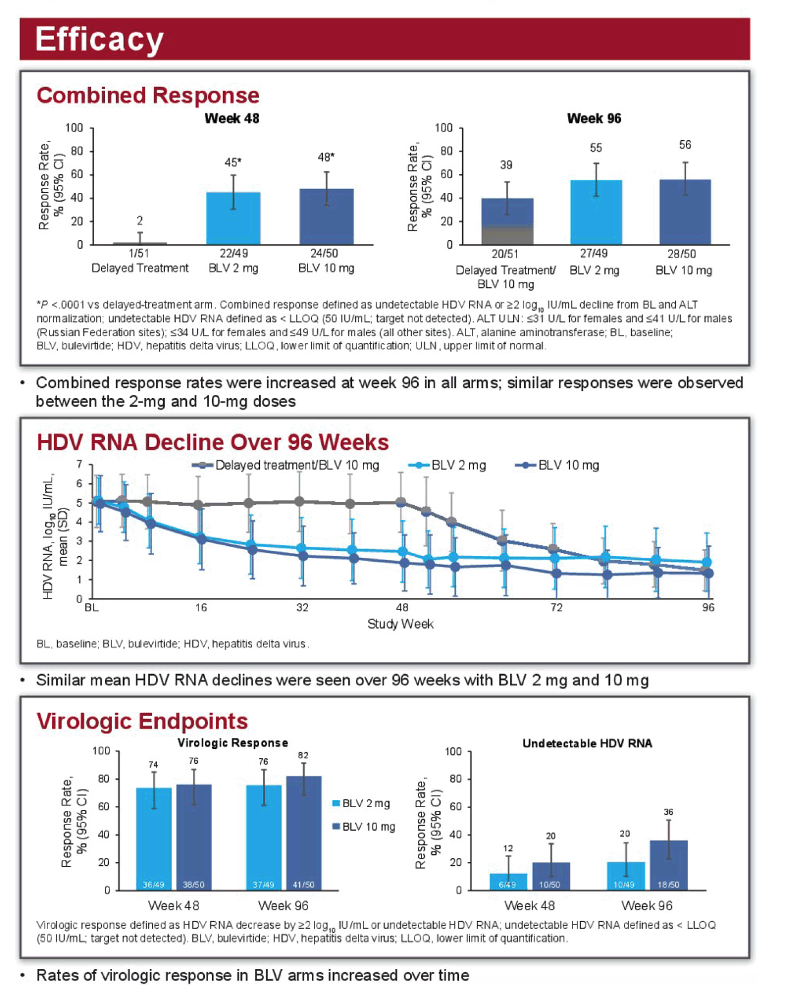
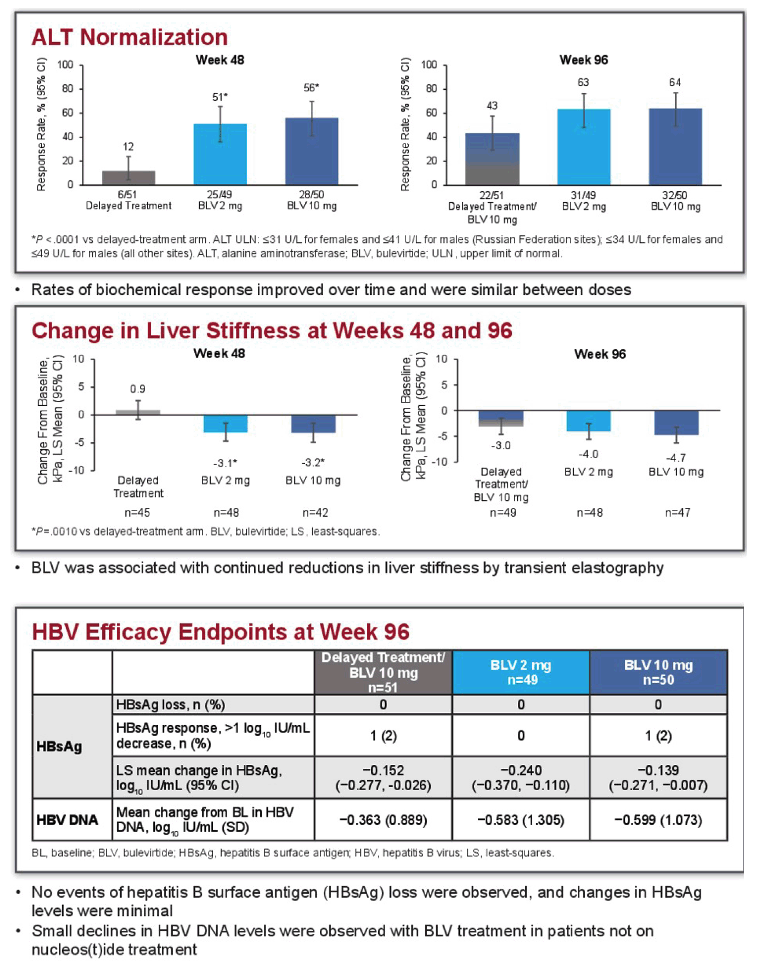
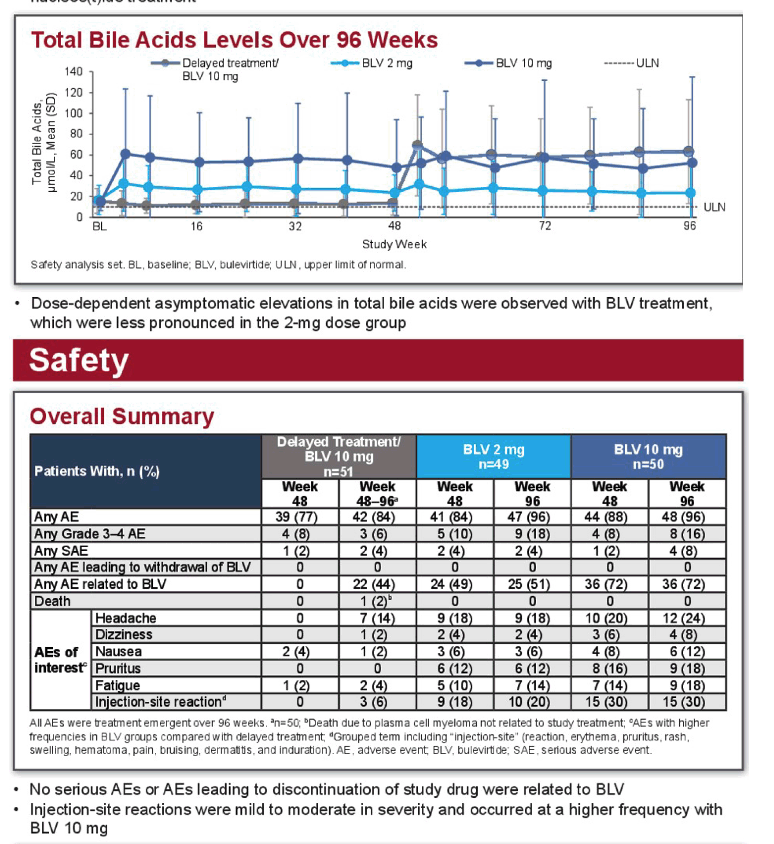
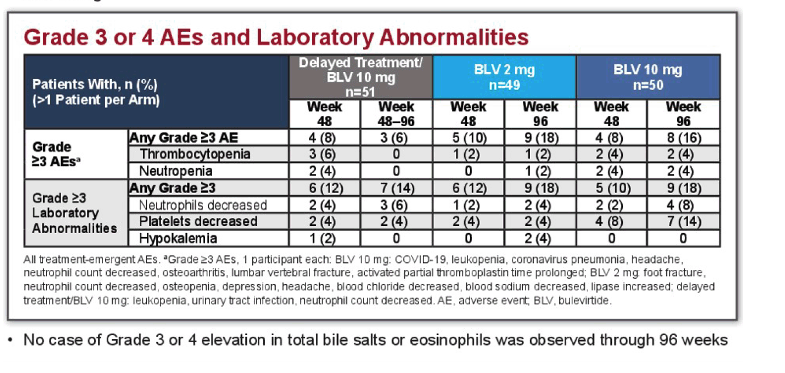
|
| |
|
 |
 |
|
|